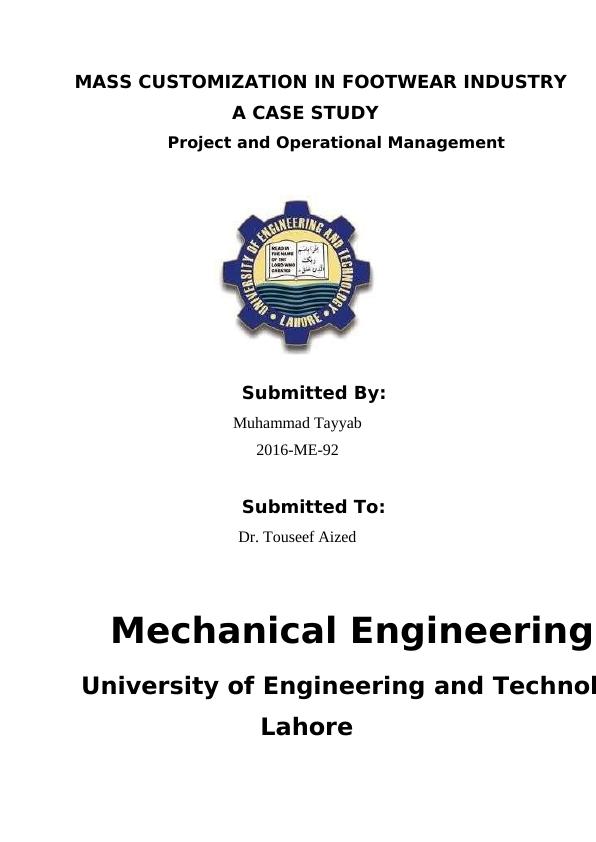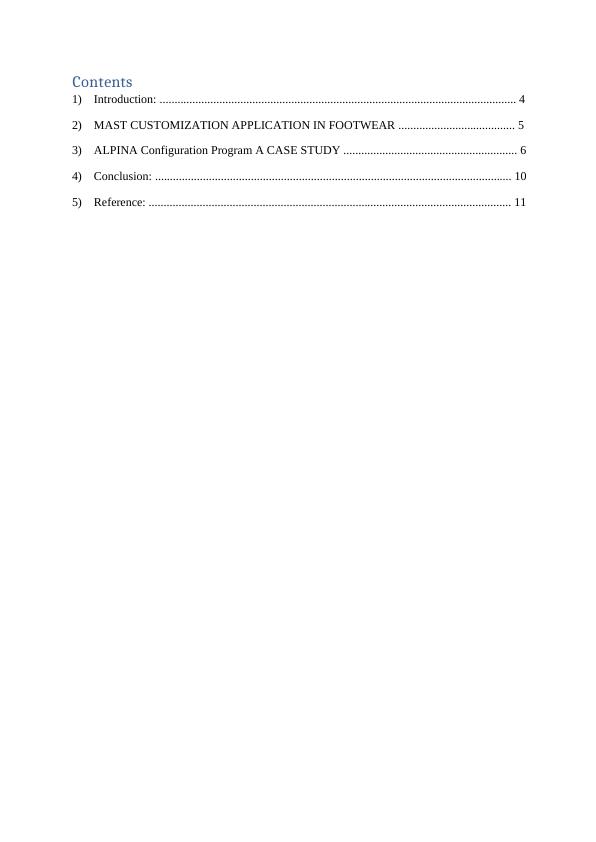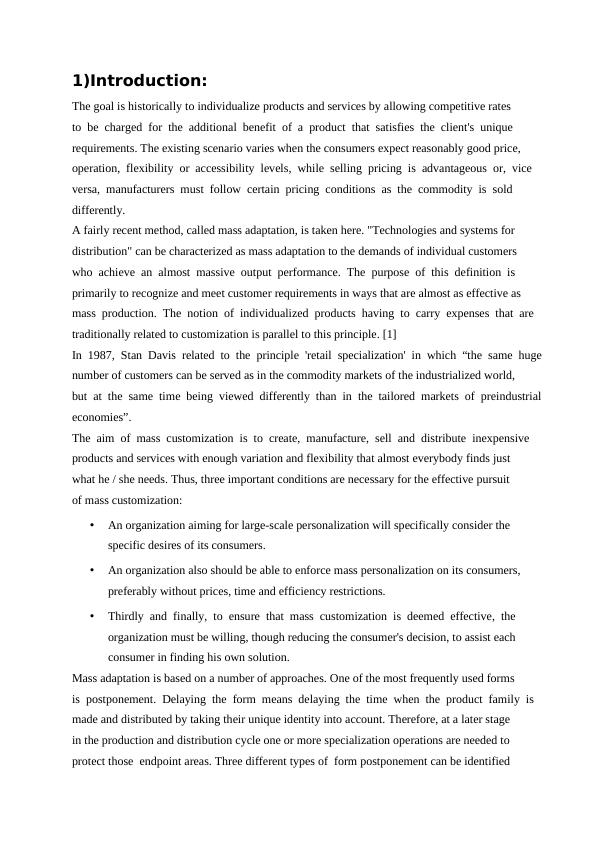Ask a question from expert
Mass Customization in Footwear Industry
11 Pages2863 Words228 Views
Added on 2020-10-15
Mass Customization in Footwear Industry
Added on 2020-10-15
BookmarkShareRelated Documents
MASS CUSTOMIZATION IN FOOTWEAR INDUSTRY A CASE STUDYProject and Operational ManagementSubmitted By: Muhammad Tayyab 2016-ME-92 Submitted To: Dr. Touseef Aized Mechanical Engineering University of Engineering and Technology Lahore

Abstract: The idea of mass personalization is one of the main problems of organizational management philosophy and action. Customers want a wide range of goods and maintain competitive purchase prices. Manufacturers must then build technologies and processes to deliver goods and services at minimal to no charge to their specific customers. It can only be achieved by combining factory processes for a output reaching mass manufacturing. This paper discusses mass personalization in the footwear industry and develops and implements the definition of a Slovenian footwear manufacturer.

Contents 1)Introduction: ....................................................................................................................... 42)MAST CUSTOMIZATION APPLICATION IN FOOTWEAR ....................................... 53)ALPINA Configuration Program A CASE STUDY .......................................................... 64)Conclusion: ....................................................................................................................... 105)Reference: ......................................................................................................................... 11

1)Introduction: The goal is historically to individualize products and services by allowing competitive rates to be charged for the additional benefit of a product that satisfies the client's unique requirements. The existing scenario varies when the consumers expect reasonably good price, operation, flexibility or accessibility levels, while selling pricing is advantageous or, vice versa, manufacturers must follow certain pricing conditions as the commodity is sold differently. A fairly recent method, called mass adaptation, is taken here. "Technologies and systems for distribution" can be characterized as mass adaptation to the demands of individual customers who achieve an almost massive output performance. The purpose of this definition is primarily to recognize and meet customer requirements in ways that are almost as effective as mass production. The notion of individualized products having to carry expenses that are traditionally related to customization is parallel to this principle. [1] In 1987, Stan Davis related to the principle 'retail specialization' in which “the same huge number of customers can be served as in the commodity markets of the industrialized world, but at the same time being viewed differently than in the tailored markets of preindustrial economies”. The aim of mass customization is to create, manufacture, sell and distribute inexpensive products and services with enough variation and flexibility that almost everybody finds just what he / she needs. Thus, three important conditions are necessary for the effective pursuit of mass customization: •An organization aiming for large-scale personalization will specifically consider the specific desires of its consumers. •An organization also should be able to enforce mass personalization on its consumers, preferably without prices, time and efficiency restrictions. •Thirdly and finally, to ensure that mass customization is deemed effective, the organization must be willing, though reducing the consumer's decision, to assist each consumer in finding his own solution. Mass adaptation is based on a number of approaches. One of the most frequently used forms is postponement. Delaying the form means delaying the time when the product family is made and distributed by taking their unique identity into account. Therefore, at a later stage in the production and distribution cycle one or more specialization operations are needed to protect those endpoint areas. Three different types of form postponement can be identified

End of preview
Want to access all the pages? Upload your documents or become a member.
Related Documents
Marketing - Historical Evolution of Marketinglg...
|10
|2044
|14
Cost Leadership Strategy Sample Assignmentlg...
|10
|2774
|76
Fashion Retailing - Assignmentlg...
|10
|2665
|373
Nike Adapt BB: The Most Advanced Fit Solution Till Datelg...
|11
|612
|267
University Marketing Principles and Practicelg...
|13
|3407
|381
Effectiveness of Digital Marketinglg...
|10
|2581
|95